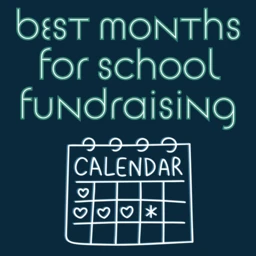When it comes to school fundraising, success isn’t just about having great ideas, it’s also about having great timing. Even the most creative campaign can fall flat if it lands during testing week or just before a school break. On the flip side, a well-timed fundraiser, even a simple one, can thrive when it matches the energy and rhythm of the school community.
Whether you’re part of a PTA, PTO, booster club, or school leadership team, understanding how to align your efforts with the academic calendar can help you avoid burnout, boost participation, and maximize results.
Back-to-School Buzz: September
September is a strong starting point. The back-to-school energy is high, families are engaged, and there’s a surge of school pride. Parents are paying attention, eager to get involved, and open to contributing, especially if it supports classroom needs or extracurricular activities. This is a great month to launch a direct donation campaign, sell school spirit wear, or promote a simple, “no-fuss” fundraiser to ease everyone into the new year.
Momentum Builds: October
By October, families are settling into routines, and the weather is perfect for outdoor events. It’s one of the best months for participation, making it ideal for active, community-driven fundraisers. Think fall festivals, walk-a-thons, or book fairs, events that bring people together and spark enthusiasm. October fundraisers tend to thrive on that growing sense of connection and involvement.
Holiday Prep: November
November offers a short but valuable window of opportunity. Early in the month, families are still engaged, and the season naturally leans toward gratitude and generosity. Campaigns that tie into these themes often perform well. But once Thanksgiving hits, attention shifts to holiday travel and preparations. If you’re fundraising in November, aim for early. Consider tying your campaign to Giving Tuesday for added national momentum.
Heartfelt Simplicity: December
December can be full of potential, but it requires a light touch. The holidays dominate attention, and financial stress can make big asks tricky. That said, people are often more emotionally connected to causes that matter like their children’s schools. Short, heartfelt campaigns focused on student-made gifts, community drives, or year-end donations can resonate, especially when they’re low-pressure and meaningful.
Quiet but Strategic: January
January may feel like a lull after the holidays, but it’s actually prime time for planning. Families are easing back into routines, but they may not be ready to open their wallets just yet. Instead, use January to prepare: map out your spring calendar, line up local sponsors, and launch passive income programs like grocery rewards or corporate matching gifts. It’s also a great month to start building out a recurring donor program.
A Sweet Spot: February
February brings fresh energy. The holidays are behind us, and spring is still on the horizon. That makes it a great time to re-engage your community. Consider campaigns tied to classroom goals, student achievements, or kindness themes. Read-a-thons and similar activities that blend academics with fundraising tend to do especially well during this midwinter stretch.
Spring Into Action: March & April
March and April are the heart of the spring fundraising season. The weather improves, the school year enters its final stretch, and energy levels pick back up. These are the best months for larger events like talent shows, fun runs, or auctions. Just keep an eye on testing schedules and spring breaks, which can disrupt even the best-laid plans. With smart scheduling, spring events can deliver major impact.
End-of-Year Energy: May
May is a whirlwind, but it also brings a flood of goodwill. With Teacher Appreciation Week, graduations, and end-of-year events, families are feeling thankful and nostalgic. It’s a powerful time for campaigns focused on staff appreciation, legacy gifts from graduating families, or one last donation push to close the year. Keep it light, celebratory, and focused on gratitude.
Summer Strategy: June to August
The summer months bring a natural slowdown in school activity, but that doesn’t mean your fundraising has to stop. Use this time to prepare for the upcoming school year: recruit volunteers, secure local business sponsors, refresh your fundraising materials, or start building alumni connections. Passive fundraisers like affiliate programs or shopping rewards are especially useful in the summer since they don’t require much oversight.
The Bottom Line: Match the Mood
The most successful fundraising calendars don’t try to cram everything into one season or chase trends without purpose. They work with the school year, not against it. When your fundraiser matches the mood of your community, it doesn’t feel like a chore, it feels like a natural part of school life.
So if your school could use help creating a smart, sustainable fundraising calendar—or just identifying the best windows for your biggest campaigns—get the timing right, and even small ideas can deliver big wins.
